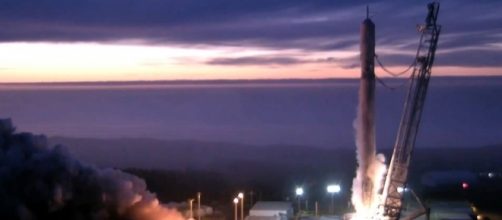SpaceX has just successfully performed its static test fire for its latest Falcon 9 rocket that is scheduled for a full launch into geostationary orbit on May 15. The test fire was an essential procedure to ensure that everything will go smoothly during the actual launch this Monday, which will have the rocket deliver the Inmarsat-5 Flight 4 satellite into orbit.
Necessary pre-launch tests
The test that took place yesterday, May 11, involved fully fueling the Falcon 9 rocket and then igniting its engines for three seconds to test out several variables and components.
Data collected during the static test fire will then be used to make minute adjustments to ensure that nothing goes wrong during the actual launch. The team even performed a countdown and other procedures, similar to what they would do during the actual launch.
After the countdown, all of the first stage Merlin 1D engines were ignited for a few seconds before an abort command was initiated, which fully shuts down all of the engines. SpaceX posted a video of the test on their Twitter account and confirmed that it was indeed a success.
Static fire test of Falcon 9 complete—targeting launch of Inmarsat-5 Flight 4 from Pad 39A on Monday, May 15. pic.twitter.com/D0iEXF42pI
— SpaceX (@SpaceX) May 11, 2017
Adjusting to customer demands
The rocket that will be launching the Inmarsat satellite has actually been modified by SpaceX to accommodate the payload's additional weight.
According to the company, the upcoming launch will be using an expanded version of the standard Falcon 9 rocket and will be absent any legs or grid fins. The removed components are apparently needed to compensate for the satellite's 13,000-pound weight.
One of many deliveries
June seems to be a very busy month for the Space Transport company as they are planning to launch an additional five rockets into space. After Monday's launch, the company is set to launch its CRS-11 Dragon mission, which will be happening on June 1 at the Kennedy Space Center Launch Complex 39A (LC-39A) in Florida.
The next launch will then occur on June 15, where the company will be reusing the first stage Falcon 9 rocket to send the BulgariaSat 1 satellite into space.
The rocket that will be used will be the same one that was used to launch the 10 Iridium NEXT satellites back in January.
Two other launches will then occur in late June. The first one is on June 29 for another batch of Iridium Next satellites from the Vandenberg Air Force Base in California and the other one for the Intelsat 35e communications satellite from Complex 39A in Florida.


